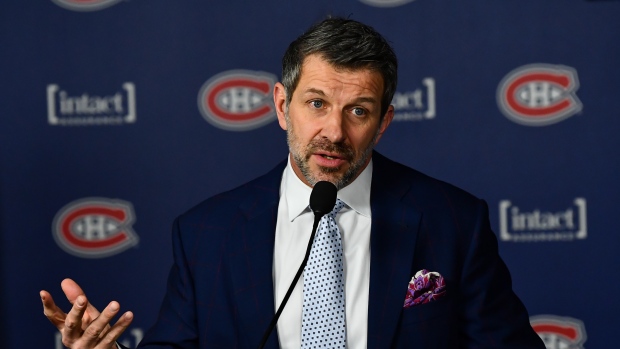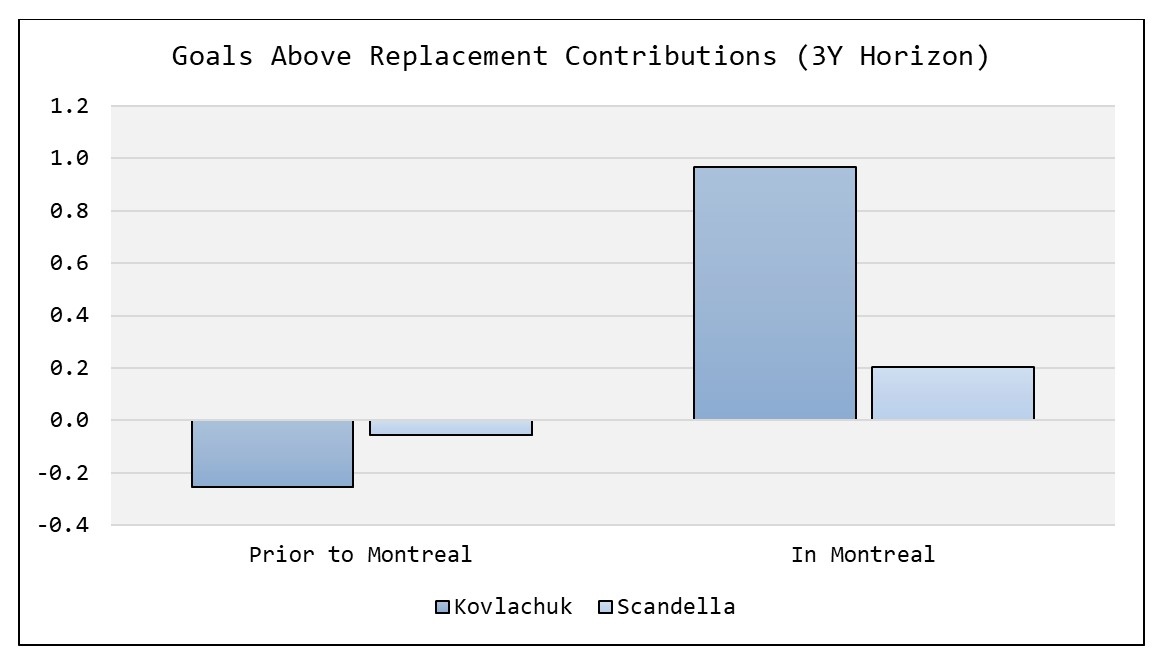Feb 24, 2020
Bergevin has proven to be a savvy opportunist
The Montreal Canadiens GM has kept his team afloat with a number of quiet moves that have allowed the franchise to stockpile assets, Travis Yost writes.
By Travis Yost

The Montreal Canadiens might be in hockey purgatory – good enough to be competitive, not good enough to reach the postseason – but that hasn’t slowed general manager Marc Bergevin in his pursuit of stockpiling assets.
One of the common criticisms of Bergevin is that he has failed to deliver a Stanley Cup-calibre team despite having ample time to do so. Bergevin assumed control of the Canadiens for the 2012-13 season, and since that time Montreal has played to a 94-point pace. Bergevin’s teams have always been game, but have never been talented enough to be considered a serious contender.
The front office opted to rebuild this roster a few seasons ago now, and that has produced mixed results. The current roster does have respectable depth, but is lacking in star power and goaltending – the latter a bigger concern considering the cap hit Carey Price will carry through the 2025-26 season. Over the last three seasons, the Canadiens are 21st in team save percentage – an article for another day, but something that shouldn’t be ignored when conducting a post-mortem on the current roster.
But the Canadiens haven’t been a bad team either, and a lot of that stems from the fact that they have made a number of quiet and savvy moves along the way.
Remember the Max Pacioretty trade? Montreal was staring down the barrel of losing one of the more productive forwards around the league, and was forced to acknowledge that their captain would be moving on. That didn’t preclude them from getting something meaningful, though – the team grabbed a big-time prospect in Nick Suzuki and was able to turn Tomas Tatar from playoff healthy scratch into a scoring presence in the top six. Salvaging Tatar’s game not only gave them some credibility at the top of the lineup, but it also turned his $5.3-million dollar average annual value contract into a friendly one.
It is this type of move, over and over, that’s kept Montreal afloat. The buildup to this year’s trade deadline has been no different. Consider the following roster moves of note:
- Acquired defenceman Marco Scandella from the Buffalo Sabres in exchange for a fourth-round pick (Jan 1. 2020)
- Signed forward Ilya Kovalchuk – previously bought out by the Los Angeles Kings – at the league minimum (Jan 3. 2020)
Two players, two very different circumstances. Scandella’s career looked like it might be over in Buffalo prior to a bit of a renaissance this season playing alongside Henri Jokiharju in a depth third-pairing role. Ilya Kovalchuk’s career also looked like it might be over in Los Angeles, but there were legitimate questions about the fit of Kovalchuk on a rebuilding team devoid of complementary talent. In both scenarios, Montreal bet that the player would supersede their prior circumstance and that, if it came to it, the players could be flipped again at the trade deadline or prior.
Follow their next set of moves:
- Traded Scandella to the St. Louis Blues in exchange for two second-round picks
- Traded Kovalchuk to the Washington Capitals for a third-round pick; salary retained
In exchange for a fourth-round pick and a few paycheques, the Canadiens were able to “buy” three draft picks from two different contenders. A lot of this simply has to do with the fact that Scandella and Kovalchuk were effective in brief stints with Montreal – enough for buyers at the deadline to see that their game was still there and offer up something enticing.
You can measure that performance change any way you like. Goals Above Replacement is one way – a regression-based technique used to summarize a player’s contributions to their team on both the offensive and defensive side of the ice – and it shows a clear and positive change in both players’ performance in limited minutes with Montreal:

Even simple counting measures work fine here. In two seasons with Los Angeles, Kovalchuk averaged 43 points per 82 games played and carried an on-ice goal differential of -25. Kovalchuk was a different story in Montreal. The Russian forward averaged 49 points per 82 games played and carried an on-ice goal differential of +8. A nice scoring uptick combined with playing on a more competitive team certainly helped changed the narrative about a player nearly written off by the NHL. Now, he’s heading to Washington to compete for a Stanley Cup. (Ironically, on arguably the best team he’s played for in his career.)
Canadiens fans have a right to criticize some of the moves that the front office has made, and, more generally, their inability to build a true contender. But the current regime’s had plenty of victories when it comes to the trade market and free agency, and the Scandella and Kovalchuk moves – while smaller in scale – are indicative of an opportunistic organization that understands what it needs to do in order to complete this roster transition.
Data via Evolving Hockey, Natural Stat Trick, and CapFriendly

